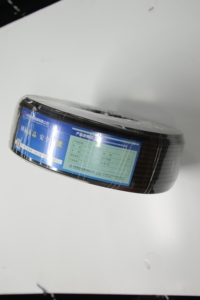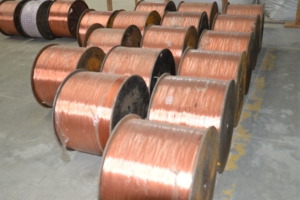
All categories
Featured selections
Trade Assurance
Buyer Central
Help Center
Get the app
Become a supplier

(602 products available)





















Solar cell ribbon wire is a thin metal strip that connects individual solar cells in a photovoltaic module. There are various types, each designed for specific applications and performance requirements. Here are some of them:
Standard Solar Cell Ribbon
This is the most commonly used type and comes in flat, rectangular shapes with widths ranging from 1 to 3 centimeters. These ribbons are typically made of high-purity copper coated with tin or silver to enhance conductivity and prevent oxidation. They are designed to connect solar cells in a series or parallel configuration. Their standard dimensions fit most solar panels, ensuring efficient current flow between cells.
Round Wire Solar Cell Connections
This type of wire is preferred in applications where flexibility and maneuverability are crucial. It is made of stranded copper, which offers excellent conductivity and flexibility. Round wire connections are often used in portable solar applications, such as solar chargers and small solar panels. Their ability to bend and twist without breaking makes them ideal for tight spaces and dynamic environments.
High-Temperature Solar Cell Ribbon
Designed for environments with elevated temperatures, high-temperature ribbons are made from materials that can withstand heat without degrading. They often feature a nickel or aluminum coating due to their excellent heat resistance and conductivity properties. These ribbons ensure reliable performance in high-temperature solar installations, such as those in desert regions or industrial rooftops.
Flexible Solar Cell Ribbon Wire
Flexible solar cell ribbon wire is a type of wire specifically designed for use in flexible solar panels. These panels can be bent and shaped to fit various surfaces, making them ideal for applications where traditional rigid solar panels cannot be used. Flexible solar cell ribbon wire is usually made from materials like copper or aluminum and may be coated with a thin layer of solder or another conductive material to enhance its conductivity and solderability. The wire is thin and lightweight, allowing for easy handling and installation in flexible solar panel systems. It is capable of maintaining a reliable electrical connection between the solar cells even when the panel is curved or contoured to fit a specific surface.
Advanced Solar Cell Interconnects
These are innovative solutions that use technologies like laser welding or ultrasonic bonding to connect solar cells. They offer advantages in terms of reduced resistance and improved reliability. For instance, laser-welded connections create a strong bond without the need for solder, reducing the risk of thermal damage to the cells. Ultrasonic bonding uses high-frequency vibrations to join metals at the molecular level, resulting in a solid and conductive joint.
The solar cell ribbon wire connects solar cells in a panel, making electricity flow from cells to the inverter and battery. The wire must be flexible and thin to avoid damaging the cells while soldering them. There are different designs of solar cell ribbon wires, and each design has unique features and benefits.
Flat Solar cell ribbon wire
This design is a flat wire that comes in widths ranging from 1 to 3 mm and thicknesses ranging from 0.1 to 0.2 mm. It is available in different lengths and can be cut to the desired size. The flat wire is very flexible and can be easily bent without breaking. It is also very thin, which reduces the shading of the solar cells. The flat solar cell ribbon wire is suitable for connecting solar cells in a series or parallel.
Round Solar cell ribbon wire
This design is a round wire with a diameter of 1 to 2 mm. It is also very flexible and can be easily bent. The round solar cell ribbon wire is thicker than the flat wire, so it casts more shadow on the solar cells. It is mainly used for connecting solar cells to the inverter and battery. The round wire is suitable for outdoor applications because it can withstand harsh environmental conditions.
Double Solar cell ribbon wire
Double solar cell ribbon wire design has two flat wires bonded together. The width of each wire ranges from 1 to 2 mm, and the thickness is about 0.1 mm. This design is very flexible and can be bent in two directions. It is suitable for connecting solar cells in series and parallel. The double solar cell ribbon wire also has good electrical conductivity due to the two wires. It is suitable for high-power solar panels.
Double sided solar cell ribbon wire
Double-sided solar cell ribbon wire is a type of wire that is used to connect solar cells to each other and to the rest of the solar panel. It is flat and has two sides, each with a conductive metal coating. This allows it to conduct electricity from either side. The wire is very thin, which reduces shading on the solar cells. It is also very flexible, making it easy to work with. The double-sided design allows for more efficient connections between solar cells, improving the overall performance of solar panels.
High-temperature solar cell ribbon wire
High-temperature solar cell ribbon wire is designed to operate in environments with temperatures up to 200 degrees Celsius. It is made from special materials that can withstand extreme heat without losing conductivity or flexibility. The wire is thicker than standard solar cell ribbon wire, which helps it maintain structural integrity at high temperatures. However, this thickness also means it casts more shadow on solar cells. Despite this drawback, high-temperature solar cell ribbon wire is ideal for concentrated solar power systems that generate heat as well as electricity.
Solar cell ribbon wires are thin wires that connect solar cells to each other and to the inverter or battery system. When integrating solar power into a system, consider the following wearing and matching suggestions to ensure optimal performance and reliability:
Material Compatibility
Solar cell ribbon wires are typically made of copper or aluminum. Match these materials with connectors and terminals made of the same metal to prevent galvanic corrosion. Galvanic corrosion can occur when two different metals are in electrical contact in the presence of an electrolyte. It can damage solar cell interconnects and other components over time. Use tinned copper or aluminum connectors to provide a corrosion-resistant layer and maintain compatibility with ribbon wire materials.
Wire Gauge and Current Rating
Select ribbon wires with an appropriate gauge (AWG) for the current they will carry. Ensure the wire's current rating meets or exceeds the maximum current from the solar cells. This prevents overheating and ensures safe operation. For high-current applications, thicker wires (lower AWG numbers) are required. They have lower resistance and can handle more current without significant voltage drop or overheating.
Temperature Rating
Consider the temperature rating of the solar cell ribbon wire and its components. Choose materials rated for the maximum temperature they may encounter in the installation. This ensures they maintain performance and reliability over time. Solar installations can experience temperature variations, so selecting components with a suitable temperature rating is critical to prevent insulation degradation and ensure long-term stability.
Solar Panel Configuration
Solar panel configurations vary based on system design. Series configurations increase voltage while parallel configurations increase current. Match the ribbon wire connections to the chosen configuration. Ensure proper voltage and current handling for the system's requirements. In series configurations, connect the positive terminal of one solar cell to the negative terminal of the next. This series connection increases the total voltage. In parallel configurations, connect the positive terminals of all solar cells together and the negative terminals together. This maintains the voltage of a single cell but increases the total current.
Insulation and Protection
Ensure that the solar cell ribbon wire has adequate insulation to protect against moisture, UV radiation, and mechanical stress. Use heat-shrink tubing or protective coverings at connections and terminations to enhance durability and prevent damage. This insulation protects against environmental factors that can degrade wire performance and longevity. It also prevents short circuits and electrical failures by providing a barrier against moisture and physical abrasion.
Q1: What are the applications of solar cell ribbon wire?
A1: Solar cell ribbon wire is primarily used for interconnecting solar cells within a photovoltaic module. They facilitate the transfer of generated electricity in the form of DC from the solar cells to the external circuit. There are two main types: rectangular and round solar cell ribbon wire. The rectangular ones are used for cell interconnections, while round ones are employed for module output connections due to their flexibility and ease of handling.
Q2: What are the characteristics of good solar cell ribbon wire?
A2: Good solar cell ribbon wire should have excellent electrical conductivity, typically achieved using high-purity copper. It should also possess good mechanical properties to withstand thermal expansion and contraction without breaking. Additionally, they should be coated with a material like tin or nickel to prevent corrosion and ensure reliable soldering connections.
Q3: How to test the conductivity of solar cell ribbon wire?
A3: To test the conductivity of solar cell ribbon wire, one can use a multimeter set to measure resistance (ohms). Measure the resistance of a known length of wire; then calculate the conductivity using the formula: Conductivity = (1/Resistance) x (Length/Area), where Length is the length of the wire and Area is the cross-sectional area. A low resistance value indicates good conductivity.
Q4: Can solar cell ribbon wire be reused?
A4: Yes, solar cell ribbon wire can be reused, but with caution. Care should be taken to avoid damaging the wire during removal from an existing installation. Reused wire should be inspected for any signs of wear, corrosion, or mechanical damage. If the wire is in good condition, it can be reused for new installations, keeping in mind that repeated soldering may weaken the wire.